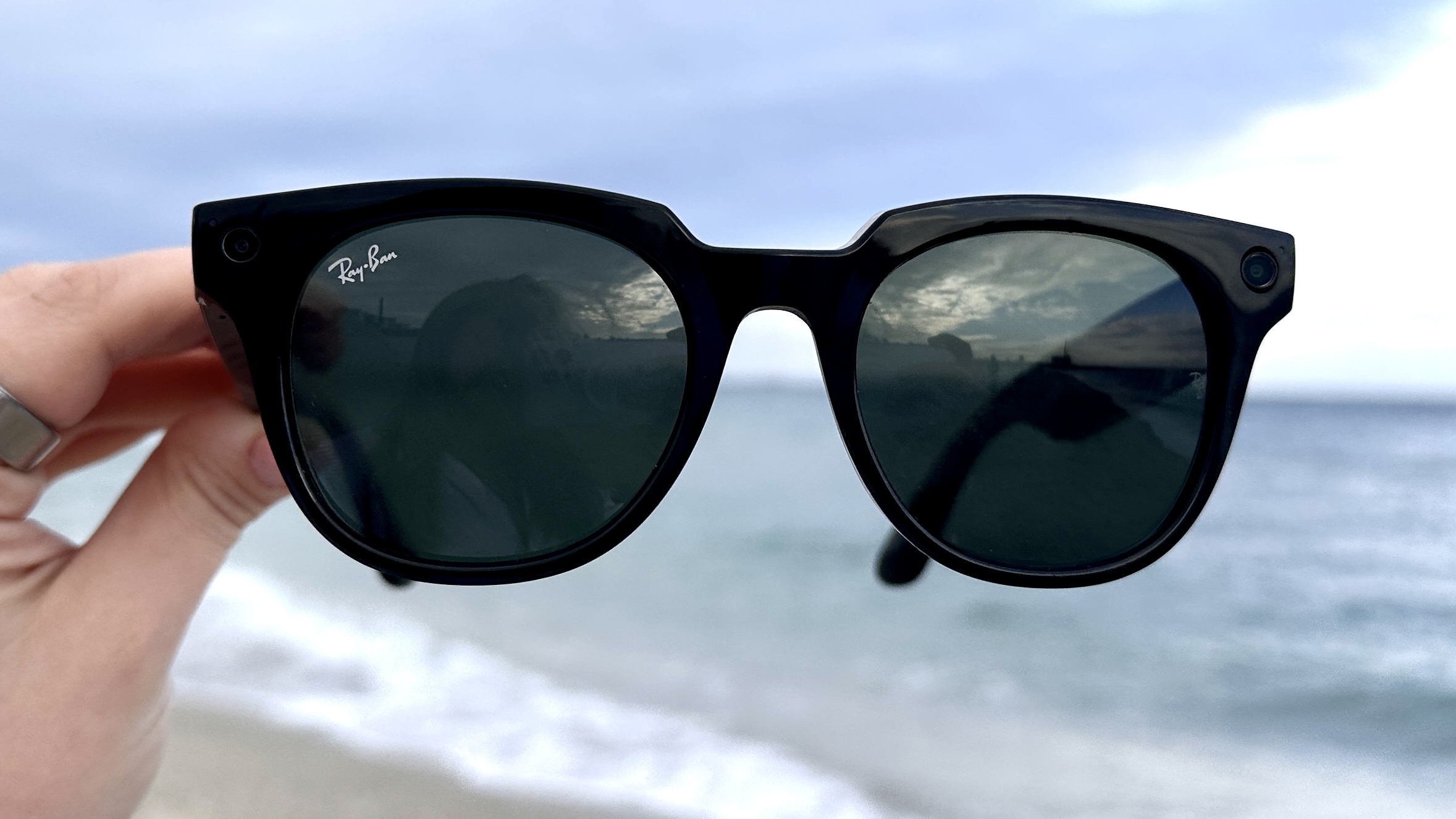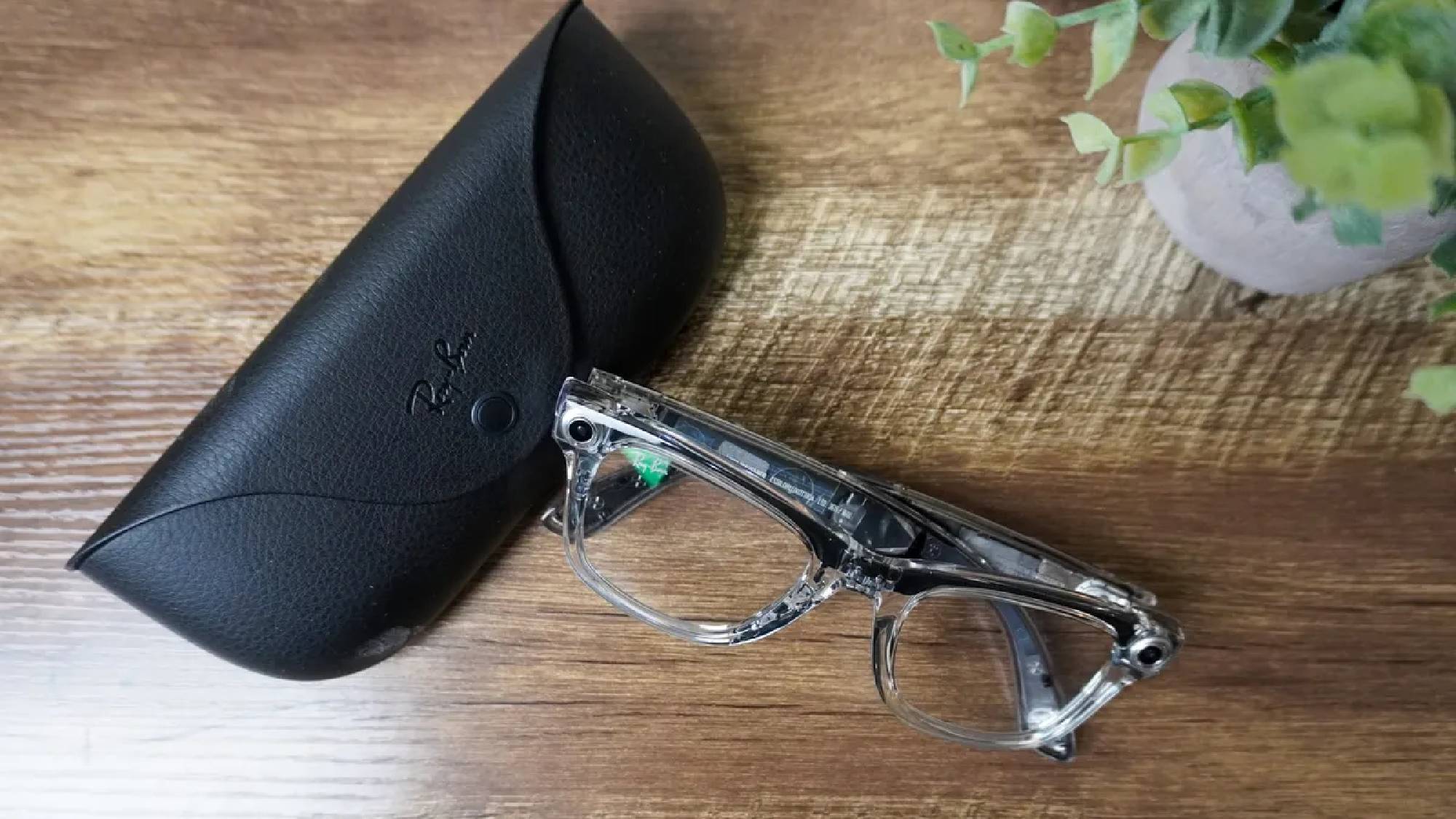Ray-Ban Meta vs Oakley Meta smart glasses: Biggest differences explained

Meta now has a new option when it comes to its smart glasses in the form of the newly announced Oakley HSTN Meta smart glasses. The latest Meta glasses look pretty slick. But with Ray-Ban Meta variants existing for a couple of years now, it's fair to wonder how these smart glass options compare.
For those in the market for a pair of smart glasses, you may be wondering if its worth sticking with the Ray-Bans or turning to Oakley's option. We're here to help.
If you're unfamiliar with Meta AI smart glasses, the Ray-Ban smart glasses rank fairly high on our best smart glasses list. We're looking forward for our chance to formally test the Oakley glasses once they become available.
Until then, we can make a Ray-Ban Meta vs Oakley Meta comparison based on what we know about the new model.
There are other styles of Ray-Ban Meta glasses, including the Skyler and Headliner but the Wayfarer are the glasses you'll see most often and the ones that Meta typically highlights when discussing its wearables.
As such, I've compiled this comparison of the Oakley HSTN Meta smart glasses and the Ray-Ban Wayfarer Meta smart glasses to help you decide which pair of AI glasses you should rock.
Oakley Meta vs Ray-Ban Meta: Specs
| Header Cell - Column 0 | Oakley HSTN Meta | Ray-Ban Wayfarer Meta |
|---|---|---|
Frame | Round | Square |
Color | Gray | Matte Black, Shiny Black, |
Lens color | Prizm 24K Polarized | Green, Clear, Green to Graphite transition, Gradient Graphite, Blue, Brown, Watermelon red |
Treatment | Polarized | Transitions, Clear |
Dimensions | Hinge to hinge: 133mm | Hinge to hinge: 131mm (137 large size) |
Weight | 49g | 49g (51g large) |
Camera | 12MP ultra-wide | 12MP ultra-wide |
Speakers | 2 Discreet Open-ear speakers | 2 open-ear Bluetooth speakers |
Microphone | 5-mic array (2 in left arm, 2 in right arm, 1 near nose pad) | 5-mic array (2 in left arm, 2 in right arm, 1 near nose pad) |
Battery | 8 hours single charge | 4 hours single charge |
Charging case | 48 hours | 36 hours |
Memory | 32GB flash storage | 32GB flash storage |
Connectivity | Wi-Fi 6, Bluetooth 5.3, iOS 15.2 and up, Android 10 and up | Wi-Fi 6, Bluetooth 5.2, iOS 15.2 and up, Android 10 and up |
Oakley Meta vs Ray-Ban Meta: Price
There is a pretty significant price difference between the Wayfarer and HSTN prices.
Get instant access to breaking news, the hottest reviews, great deals and helpful tips.
Right now you can pick up a pair of Ray-Bans for $299 while the Oakleys can be pre-ordered for $499, a $200 difference. The transition lens Wayfarers are closer to the Oakleys at $379, but still cost $120 less.
The Oakleys design is listed as a limited edition and Meta says it will only be available for "a limited time," so we're not sure how long that will remain open.
There are some upgraded differences including better cameras and improved cameras in the Oakleys that could hint at why the new glasses are so much more expensive.
The improved specs are a boon to the Oakleys, but if you're just dipping your toes into AI smart glasses, than the less expensive Ray-Bans might be be a better fit for your budget.
Overall, the Ray-Bans are more wallet friendly but the Oakleys do offer double the battery life and better video capture, at least on paper.
Oakley Meta vs Ray-Ban Meta: Design

Ray-Ban Metas come in two sizes — a standard and large version. In contrast, the Oakleys are only available in one size that slots in right between the two Ray-Bans. The Oakleys weigh the same as the standard Wayfarers at 49 grams, and slightly less than the larger version.
The big noticeable difference is in the design aesthetic, where the Wayfarers have a more square lens shape, while the HSTN have a rounded lens. Plus, the nose pads zone notches in a bit on the Oakleys compared to the Wayfarer where the nose pad area is thinner.
Ray-Ban Meta glasses have a number of lens options ranging from transitions to clear, green and brown and red compared to the Oakley pair, which only is available with a Prizm 24K polarized lens that are "designed for specific sports and environments." The Prizm lenses are an Oakley design and can be seen on its non-smart glasses.
Overall, your choice will come down to aesthetics. These Oakleys aren't a Meta-fied pair of wraparound Sphaera shades. They're pretty slick looking threading the needle between sports and daily wear.
The Ray-Bans have been around longer and have more colorways for the frames including an N64-style transparent set that gives you more options to play with when picking a pair.
Oakley Meta vs Ray-Ban Meta: Cameras
On the whole, the cameras on the Ray-Ban Wayfarers and the Oakley HSTN glasses are basically the same.
Both have 12MP ultra-wide lenses (that you can see in the corners of the glasses) which capture 3024 x 4032 images and video capture of 1440 x 1920 pixels at 30 FPS.
However, the HSTN specs also have a 100 degree field of view. Neither the Meta site nor Ray-Ban list field of view specs for the Wayfarer. Additionally, the Oakleys can capture 720p video at 120 FPS.
Oakley Meta vs Ray-Ban Meta: Performance & AI

As far as we can tell there doesn't appear to be a difference in performance and AI between the Ray-Bans and Oakleys.
Both will have access to Meta AI for vocal queries, live translation, and more. They also have access to the Meta AI app which lets you customize settings and interact with the Meta AI assistant on both the glasses and the app.
As expected, both can make and take phones calls, or send text messages from the glasses.
Lastly, the glasses have speakers for listening to music. The Ray-Bans are listed as open-ear Bluetooth speakers, while the Oakleys are just listed as open-ear, though it does have Bluetooth 5.3 connectivity, compared to 5.2 for the Wayfarers.
Oakley Meta vs Ray-Ban Meta: Battery

As mentioned above, the Oakley's HSTN glasses claim a battery life of 8 hours on a single charge, which is double the claimed 4 hours on the Ray-Bans.
In our Ray-Ban Meta glasses review we found the glasses lasted around 6 hours of active use. Once we are able to test the Oakley's ourselves, we'll know where the battery life comparison truly stands.
The charging case with Oakley's model is also an improvement, with a claimed additional 48 hours of use; the Ray-Ban cases offer up to 36 hours.
The Ray-Ban glasses do come with a nice leather case, while the Oakleys come in a more rugged-looking case that appears built for more sports and outdoor activities.
Oakley Meta vs Ray-Ban Meta: Outlook

Until we're able to physically test the Oakley Meta glasses, we won't know how the Ray-Ban Wayfarers and HSTN smart glasses truly compare.
But from what we've seen so far, the Oakleys boast several upgrades from the Ray-Ban glasses with a slightly better camera and better battery life.
Right now what it comes down to is price and aesthetics. The Oakleys, while a limited edition, are far more expensive than the Ray-Bans and perhaps don't offer enough of an upgrade to justify the price.
If money isn't an issue, then it will come down to whether or not you prefer the look of the Oakleys. I happen to think they look pretty solid, even with the nose pad notch.
You might prefer the more daily wear approach of the Ray-Bans that would look great in most social settings, especially with the availability of different lenses and colorways.
Follow Tom's Guide on Google News to get our up-to-date news, how-tos, and reviews in your feeds. Make sure to click the Follow button.
More from Tom's Guide
- New Meta prototype headsets combine goggle-like design with ultra-wide VR — and it could be a sneak peek at the Meta Quest 4
- Meta Quest 4 rumors: Everything we know so far
- Meta’s new 'Superintelligence' team could upend the entire AI industry — here's why OpenAI should be worried

Scott Younker is the West Coast Reporter at Tom’s Guide. He covers all the lastest tech news. He’s been involved in tech since 2011 at various outlets and is on an ongoing hunt to build the easiest to use home media system. When not writing about the latest devices, you are more than welcome to discuss board games or disc golf with him. He also handles all the Connections coverage on Tom's Guide and has been playing the addictive NYT game since it released.
You must confirm your public display name before commenting
Please logout and then login again, you will then be prompted to enter your display name.
